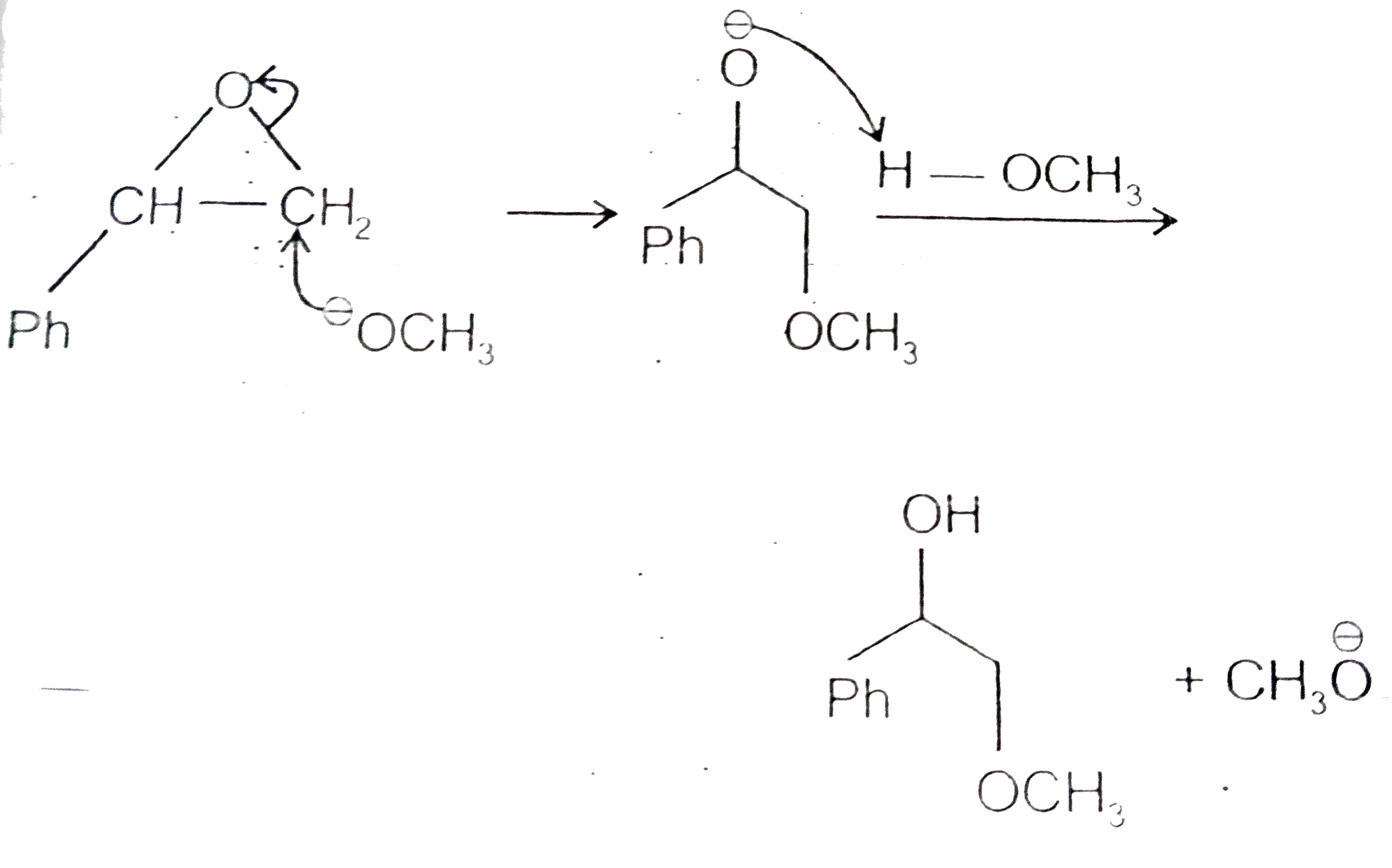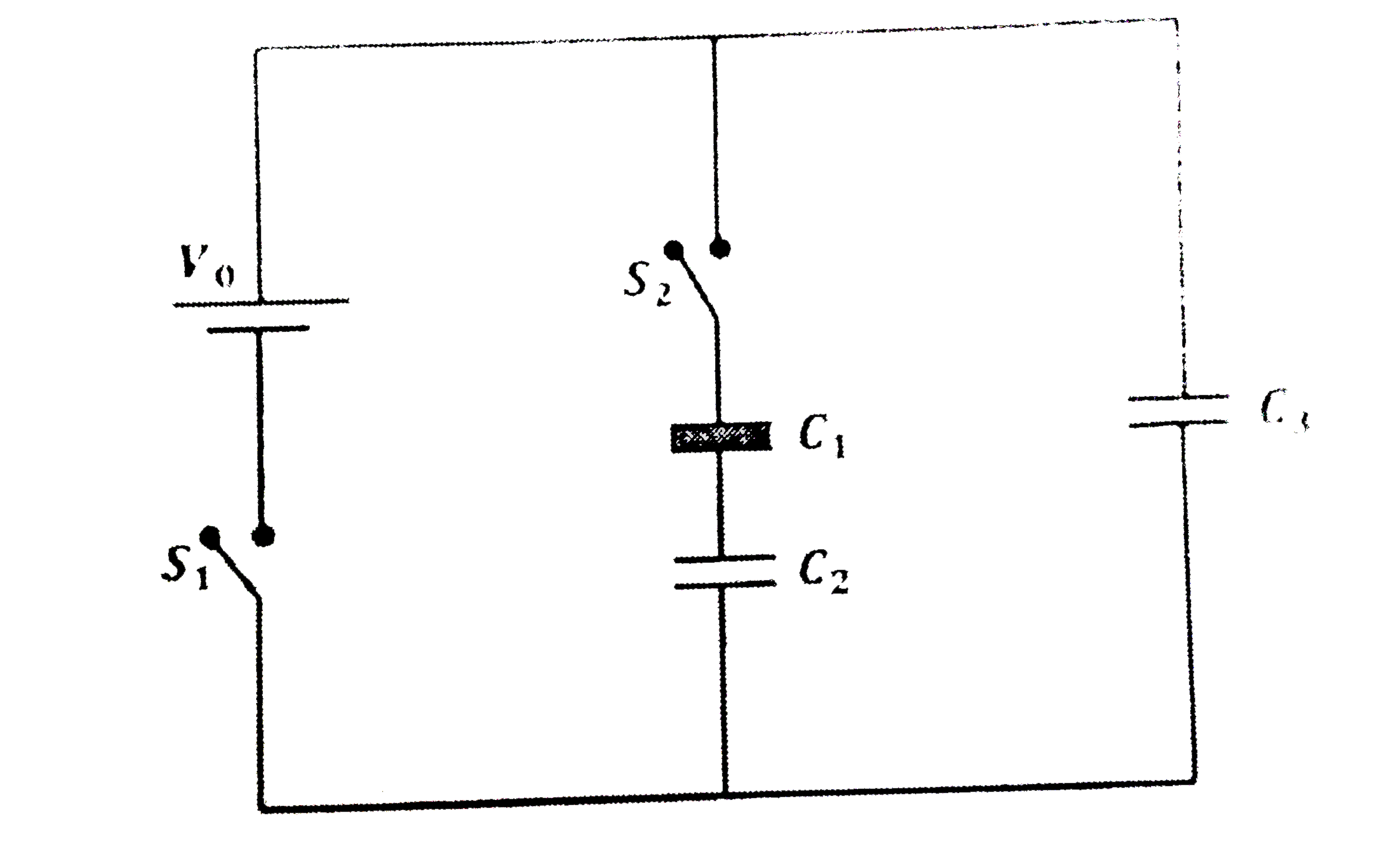(i) Give the possible reason for the relative reactivities when iodide ions in acetone solution reacts with MeBr, EtBr, iso-prBr and t-BuBr under condition where only the SN2 mechanism operates. The relative reactivities were found to be 10,000: 65:0.50:0,0:039.
(ii) In an SN2) reaction there relative reactivities are not observed in SN1 condition.
Step-by-Step Solution:
1. Understanding SN2 Mechanism:
- The SN2 (Substitution Nucleophilic Bimolecular) mechanism involves a single concerted step where the nucleophile attacks the substrate simultaneously as the leaving group departs. The rate of the reaction is influenced by steric hindrance around the carbon atom that is being attacked.
2. Analyzing the Compounds:
- The compounds in question are:
- Methyl bromide (MeBr)
- Ethyl bromide (EtBr)
- Isopropyl bromide (iso-PrBr)
- Tertiary butyl bromide (t-BuBr)
3. Steric Hindrance:
- Methyl bromide has no steric hindrance, allowing the iodide ion to attack easily.
- Ethyl bromide has minimal steric hindrance, making it more reactive than isopropyl bromide.
- Isopropyl bromide has moderate steric hindrance due to the presence of two methyl groups, which makes it less reactive than ethyl bromide.
- Tertiary butyl bromide has the highest steric hindrance because it is surrounded by three methyl groups, making it the least reactive in an SN2 reaction.
4. Relative Reactivity Order:
- Based on the steric hindrance, the relative reactivities can be summarized as:
- MeBr > EtBr > iso-PrBr > t-BuBr
- The given reactivity ratios (10,000:65:0.50:0.039) support this order, indicating that MeBr is the most reactive and t-BuBr is the least reactive.
(ii) Reactivity in SN1 Mechanism:
1. Understanding SN1 Mechanism:
- The SN1 (Substitution Nucleophilic Unimolecular) mechanism involves two steps: the formation of a carbocation intermediate followed by the attack of the nucleophile. The rate of the reaction is determined by the stability of the carbocation formed.
2. Carbocation Stability:
- Tertiary carbocations are the most stable due to hyperconjugation and inductive effects from surrounding alkyl groups.
- The stability order of carbocations formed from the given compounds is:
- t-BuBr (most stable) > iso-PrBr > EtBr > MeBr (least stable)
3. Reactivity Order in SN1:
- Since the rate of the SN1 reaction depends on the stability of the carbocation and not on steric hindrance, the reactivity order for the SN1 mechanism will be:
- t-BuBr > iso-PrBr > EtBr > MeBr
- This is contrary to the SN2 mechanism where steric hindrance plays a significant role.
Summary of Answers:
- (i) The relative reactivities in an SN2 mechanism are due to steric hindrance, with the order being MeBr > EtBr > iso-PrBr > t-BuBr.
- (ii) In an SN1 mechanism, the reactivities are based on carbocation stability, leading to the order t-BuBr > iso-PrBr > EtBr > MeBr.
- The SN2 (Substitution Nucleophilic Bimolecular) mechanism involves a single concerted step where the nucleophile attacks the substrate simultaneously as the leaving group departs. The rate of the reaction is influenced by steric hindrance around the carbon atom that is being attacked.
- The compounds in question are:
- Methyl bromide (MeBr)
- Ethyl bromide (EtBr)
- Isopropyl bromide (iso-PrBr)
- Tertiary butyl bromide (t-BuBr)
- Methyl bromide has no steric hindrance, allowing the iodide ion to attack easily.
- Ethyl bromide has minimal steric hindrance, making it more reactive than isopropyl bromide.
- Isopropyl bromide has moderate steric hindrance due to the presence of two methyl groups, which makes it less reactive than ethyl bromide.
- Tertiary butyl bromide has the highest steric hindrance because it is surrounded by three methyl groups, making it the least reactive in an SN2 reaction.
- Based on the steric hindrance, the relative reactivities can be summarized as:
- MeBr > EtBr > iso-PrBr > t-BuBr
- The given reactivity ratios (10,000:65:0.50:0.039) support this order, indicating that MeBr is the most reactive and t-BuBr is the least reactive.
- The SN1 (Substitution Nucleophilic Unimolecular) mechanism involves two steps: the formation of a carbocation intermediate followed by the attack of the nucleophile. The rate of the reaction is determined by the stability of the carbocation formed.
- Tertiary carbocations are the most stable due to hyperconjugation and inductive effects from surrounding alkyl groups.
- The stability order of carbocations formed from the given compounds is:
- t-BuBr (most stable) > iso-PrBr > EtBr > MeBr (least stable)
- Since the rate of the SN1 reaction depends on the stability of the carbocation and not on steric hindrance, the reactivity order for the SN1 mechanism will be:
- t-BuBr > iso-PrBr > EtBr > MeBr
- This is contrary to the SN2 mechanism where steric hindrance plays a significant role.
- (i) The relative reactivities in an SN2 mechanism are due to steric hindrance, with the order being MeBr > EtBr > iso-PrBr > t-BuBr.
- (ii) In an SN1 mechanism, the reactivities are based on carbocation stability, leading to the order t-BuBr > iso-PrBr > EtBr > MeBr.
Similar Questions
Attack by a strong nucleophile such as CH3OΘ (Methoxide ion ) on an epoxide occurs at the least hindered carbon similar to an SN2 reaction

Attack by a weak nucleophile such as MeOH . Can occur only when the epoxide has been protonated so that a better leaving group is formed under acidic condition weak nucleophile attacks more substituted carbon to give final product .
Which statement is true about base ring opening reaction of epoxide ?
View SolutionA point moves along a circle with a speed v=kt , where K=0.5m/s2
Find the total acceleration of the point the momenet when it has covered the nth Fraction of the circle after the beginging of motion, where n=110 .
View Solution
Knowledge Check
The relative reactivity of following halides toward SN2 reaction follows the order :
 AQ>S>R>PBP>S>RgtQCS>R>Q>PDP>R>S>Q
AQ>S>R>PBP>S>RgtQCS>R>Q>PDP>R>S>Q
Nucleophilic substitution reactions generally expressed as
Nu−+R−L→R−Nu+L−
Where Nu−→ Nucleophile , R−L→ substrate, L→ leaving group
The best leaving groups are those that become the most stable ions after they depart. since most leaving group leave as a negatibe ion, the best leaving groups are those ions that stabilize a negative charge most effectively. A good leaving group should be
(a) electron-withdrawing to polarize the carbon
(b) stable once it has left (not a strong base)
(c) polaristable to maintain partial bonding with the carbon in the transition state (both SN1 and SN2). This bonding helps to stabilise the transition state and reduces the activation energy.
(I) CH3Br (II) CH3F (III) CH3OH (IV) CH3OSO2CF3
The correct order of decreasing reactivity of the above compounds towards CH3O− in an SN2 reaction is:
View SolutionThree identical capacitors C1,C2 and C3 have a capacitance of 1.0μF each and they are uncharged initially. They are connected in a circuit as shown in the figure and C1 is then filled completely with a dielectric material of relative permittivity εr. The cell electromotive force (emf) V0=8V. First the switch S1 is closed while the switch S2 is kept open. When the capacitor C3 is fully charged, S1 is opened and S2 is closed simultaneously. When all the capacitors reach equilibrium, the charge on C3 is found to be 5μc. The value of εr = ____________.

View SolutionCell voltages and half-cell potentials are often compeared under standard conditions called the standard state at a specified temperature (298K). The standard state requires all reagents to be pure with all gases at unit fugacity, all ions at unit activity and all electrical connections between half-cells to be made with platinum. Suppose following are half cell reaction, with respective emf (s) are -0.25 V and -0.3V.
Cell reaction I Pt(H2)∣HCl1 atm
Cell reaction II Pt(H2)∣H2SO41 atm
pH value of cell reaction I is
View SolutionCell voltages and half-cell potentials are often compeared under standard conditions called the standard state at a specified temperature (298K). The standard state requires all reagents to be pure with all gases at unit fugacity, all ions at unit activity and all electrical connections between half-cells to be made with platinum. Suppose following are half cell reaction, with respective emf (s) are -0.25 V and -0.3V.
Cell reaction I Pt(H2)∣HCl1 atm
Cell reaction II Pt(H2)∣H2SO41 atm
pH value of cell reaction I is
View SolutionFree iodine is titrated against standard reducing agent usually with sodium thiosulphate , i.e.
K2Cr2O7+6Kl+7H2SO4→Cr2(SO4)3+4K2SO4+7H2O+l2
2CuSO4+4Kl→Cu2l2+2K2SO4+l2
l2+Na2S2O3→2Nal+Na2S4O6
In iodometric titration, starch solution is used as an indicator. Starch solution gives blue or violet colour with free iodine .At the end point , blue or violet colour disappears when iodine is completely changed to iodide.
50 ml of an aqueous solution of H2O2 was treated with excess of Kl in dil. H2SO4 . The liberated iodine required 20 ml of 0.1NNa2S2O3 for complete reaction. The concentration of H2O2 is
View SolutionCell voltages and half-cell potentials are often compeared under standard conditions called the standard state at a specified temperature (298K). The standard state requires all reagents to be pure with all gases at unit fugacity, all ions at unit activity and all electrical connections between half-cells to be made with platinum. Suppose following are half cell reaction, with respective emf (s) are -0.25 V and -0.3V.
Cell reaction I Pt(H2)∣HCl1 atm
Cell reaction II Pt(H2)∣H2SO41 atm
Zinc gives H2 with H2SO4 and HCI but not with HNO3 because:
View SolutionA block with a mass of 2kg hangs without vibrating at the end of a spring of spring constant 500N/m, which is attached to the ceiling of an elevator. The elevator is moving upwards with an acceleration g3. At time t=0, the acceleration suddenly ceases.
(a) What is the angular frequency of oscillation of the block after the acceleration ceases ?
(b) By what amount is the spring stretched during the time when the elevator is accelerating ?
(c )What is the amplitude of oscillation and initial phase angle observed by a rider in the elevator in the equation, x=Asin(ωt+ϕ) ? Take the upward direction to be positive. Take g=10.0m/s2.
View Solution
